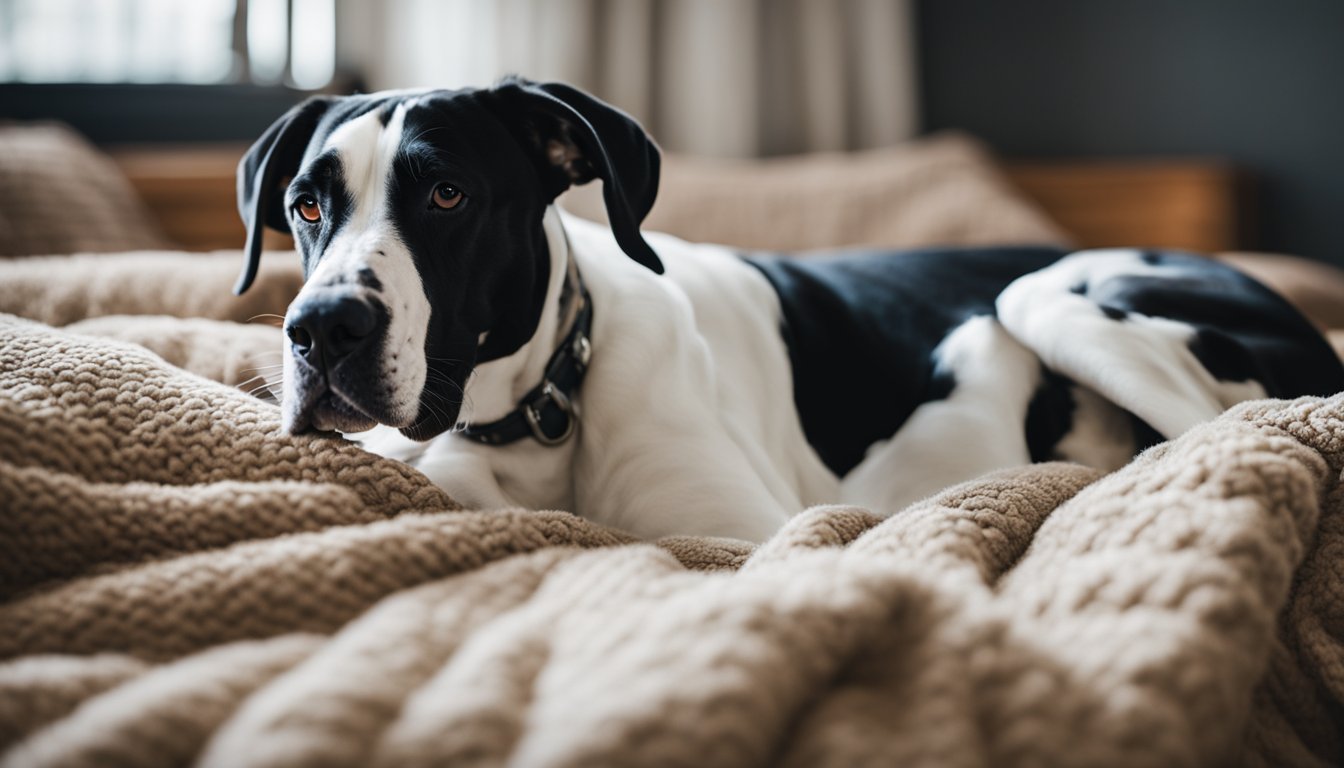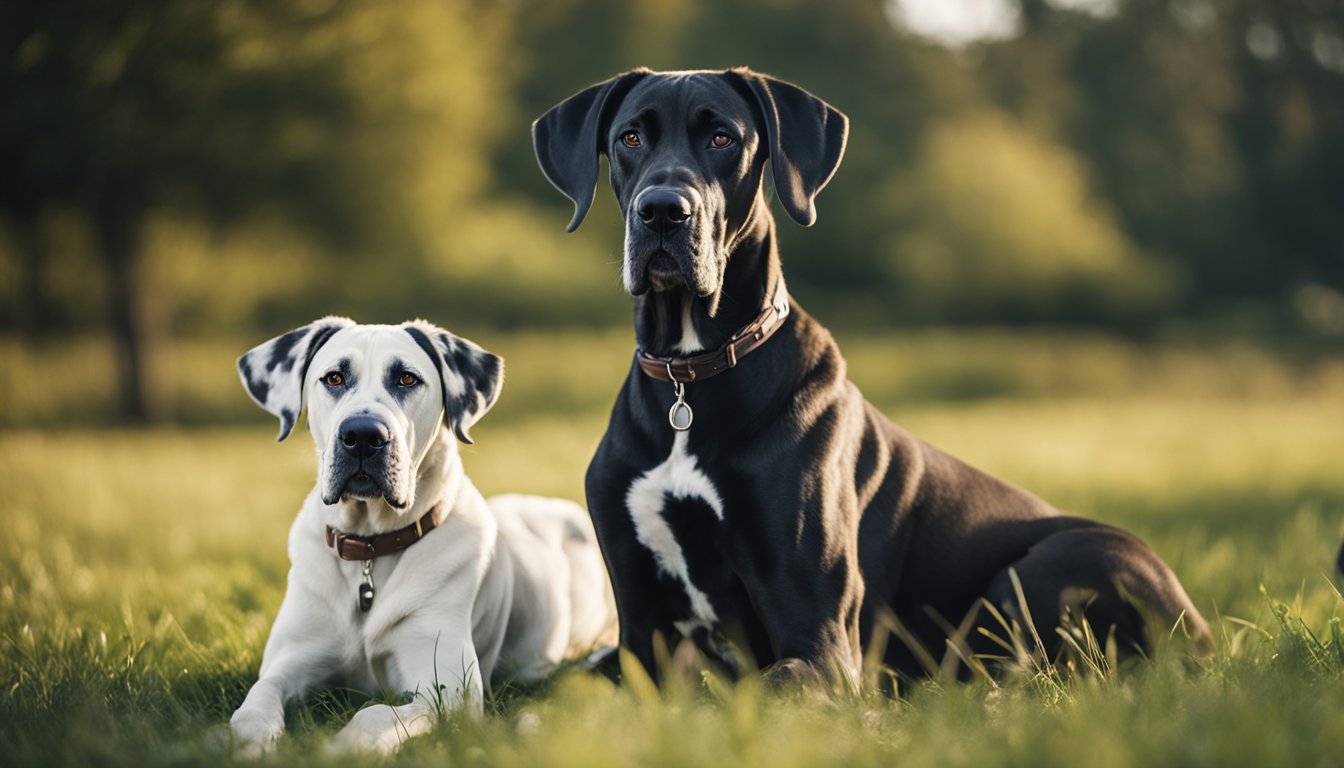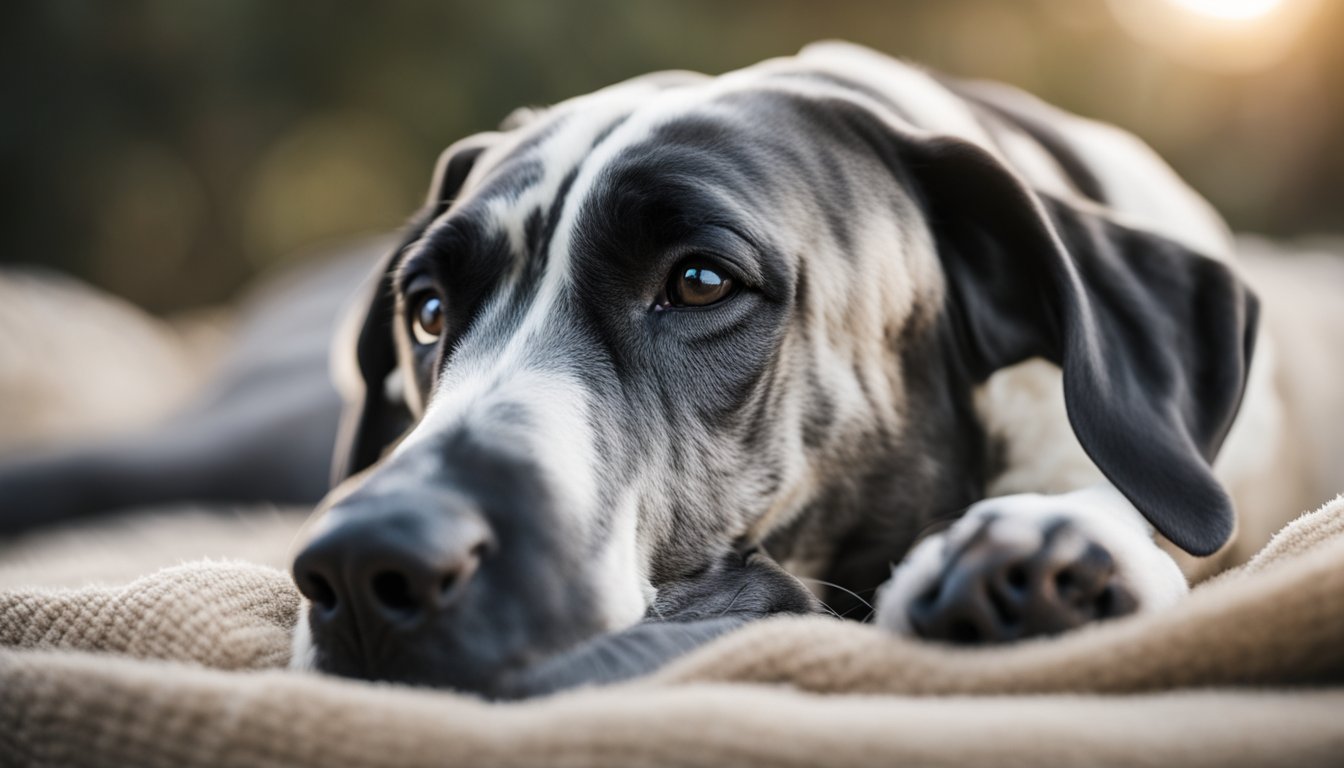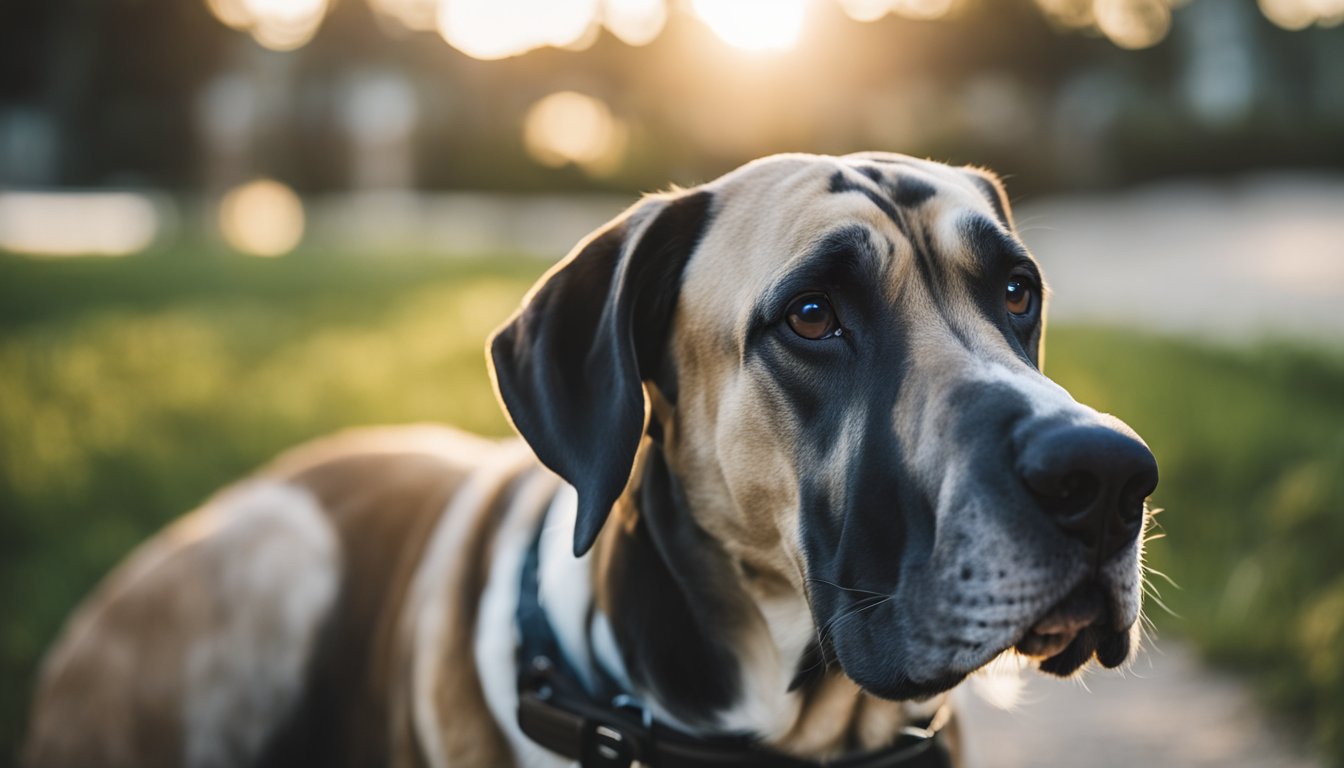
Great Dane mixes have become increasingly popular in recent years, with many people drawn to their unique looks and personalities. However, one question that often arises is whether these mixed-breed dogs live longer than their purebred counterparts. While there is no simple answer to this question, there are several factors that can impact the lifespan of Great Dane mixes.
Some Great Dane mixes may have a longer lifespan than purebred Great Danes, while others may have a shorter lifespan due to health issues associated with their specific breed mix. Additionally, factors such as diet, exercise, and overall quality of care can also impact the lifespan of Great Dane mixes.
Key Takeaways
- Great Dane mixes may or may not live longer than purebred Great Danes, depending on their specific breed mix and overall health.
- Factors such as diet, exercise, and quality of care can impact the lifespan of Great Dane mixes.
- Understanding the specific health concerns associated with different Great Dane mixes is important for ensuring their long-term health and well-being.
Table of Contents
Understanding Great Dane Mixes
Great Dane mixes are crossbreeds that result from breeding a Great Dane with another dog breed. These mixed breeds are becoming increasingly popular due to their unique traits and characteristics.
Great Dane mixes can vary in size and appearance, depending on the breed they are mixed with. While some mixes may be smaller than purebred Great Danes, others may be larger. The coat colors of Great Dane mixes can also vary, depending on the breed they are mixed with.
It is important to note that Great Dane mixes do not necessarily live longer than purebred Great Danes. The lifespan of a Great Dane mix can vary considerably, depending on factors such as diet, lifestyle, and quality of care.
When considering a Great Dane mix as a pet, it is important to research the breed thoroughly to ensure that it is a good fit for your lifestyle and living situation. Some Great Dane mixes may require more exercise and mental stimulation than others, while others may be more laid-back and easygoing.
Overall, Great Dane mixes can make wonderful pets for the right owner. With proper care and attention, these mixed breeds can live happy and healthy lives.
Popular Great Dane Mixes

Great Dane mixes have become increasingly popular in recent years. Mixes are born of two different purebred parents and can inherit traits from both breeds.
Here are some of the most popular Great Dane mixes:
Labradane
The Labradane is a mix between a Great Dane and a Labrador Retriever. These dogs are known for their friendly and outgoing personalities.
They are also highly intelligent and easy to train. Labradanes are typically large dogs, weighing between 100 and 190 pounds.
Daniff
The Daniff is a mix between a Great Dane and a Mastiff. These dogs are often referred to as gentle giants due to their large size and friendly personalities.
Daniffs can weigh between 115 and 230 pounds, making them one of the largest Great Dane mixes.
Great Danoodle
The Great Danoodle is a mix between a Great Dane and a Poodle. These dogs are known for their hypoallergenic coats and friendly personalities.
Great Danoodles can weigh between 50 and 110 pounds, making them a smaller Great Dane mix.
Great Shepherd
The Great Shepherd is a mix between a Great Dane and a German Shepherd. These dogs are highly intelligent and loyal.
They can weigh between 70 and 140 pounds and require regular exercise and mental stimulation.
Weiler Dane
The Weiler Dane is a mix between a Great Dane and a Doberman Pinscher. These dogs are known for their protective and loyal personalities.
Weiler Danes can weigh between 70 and 120 pounds and require regular exercise and training.
American Bull Dane
The American Bull Dane is a mix between a Great Dane and an American Pitbull Terrier.
These dogs are often misunderstood due to their Pitbull heritage, but they can make excellent family pets with proper training and socialization. American Bull Danes can weigh between 60 and 120 pounds.
Other Popular Great Dane Mixes
Other popular Great Dane mixes include the Danesky (Great Dane and Siberian Husky), Irish Dane (Great Dane and Irish Wolfhound), and Saint Dane (Great Dane and Saint Bernard).
These dogs can vary in size and temperament, so it is important to do research before bringing one home.
Overall, Great Dane mixes can make excellent pets for the right family. It is important to consider the size, temperament, and exercise needs of each individual mix before making a decision.
Health and Lifespan of Great Dane Mixes

Great Dane mixes are known for their large size and gentle temperament. They are a popular breed for families due to their friendly nature and loyalty.
However, like all dogs, Great Dane mixes are prone to certain health issues that can affect their lifespan.
Lifespan
Great Dane mixes do not typically have a significantly longer lifespan than pure-breed Great Danes.
However, this can vary based on the quality of care, diet, and lifestyle. Their larger overall size is still a significant factor in terms of lifelong health.
Health Issues
Great Dane mixes are prone to many of the same health issues as pure-breed Great Danes.
Some of the most common health issues include:
- Bloat: A life-threatening condition where the stomach fills with gas and twists on itself.
- Cardiomyopathy: A disease that affects the heart muscle, leading to heart failure.
- Hip dysplasia: A condition where the hip joint doesn’t fit together correctly, leading to arthritis and pain.
- Elbow dysplasia: A similar condition to hip dysplasia but affecting the elbow joint.
- Wobbler syndrome: A neurological condition that affects the spinal cord, leading to weakness and difficulty walking.
- Dilated cardiomyopathy: A type of cardiomyopathy where the heart becomes enlarged and weakened.
- Hypothyroidism: A condition where the thyroid gland doesn’t produce enough hormones, leading to weight gain and lethargy.
- Entropion: An eye condition where the eyelid rolls inward, causing irritation and pain.
- Arthritis: A condition where the joints become inflamed, leading to pain and stiffness.
Health and Care
To ensure a long and healthy life for Great Dane mixes, it is essential to provide them with proper care.
This includes regular exercise, a healthy diet, and regular veterinary check-ups. Owners should also be aware of the early signs of health issues and seek veterinary care promptly if any concerns arise.
In conclusion, while Great Dane mixes may not live significantly longer than pure-breed Great Danes, they can still live long and healthy lives with proper care and attention to their health needs!
Caring for Great Dane Mixes

Great Dane mixes are known for their large size and playful nature. To ensure their health and longevity, it is important to provide them with proper care and attention.
Here are some tips on how to care for your Great Dane mix:
Diet and Nutrition
A healthy diet is crucial for the overall health of your Great Dane mix. It is important to provide them with high-quality dog food that is specifically formulated for large breeds.
Make sure to read the labels and choose a food that contains all the necessary nutrients, such as protein, carbohydrates, and vitamins. Avoid feeding them table scraps or human food as it can upset their stomach and lead to obesity.
Exercise and Outdoor Activities
Great Dane mixes require regular exercise to maintain their physical and mental health. They enjoy outdoor activities such as walks, runs, and hikes.
However, it is important to avoid overexerting them, especially in hot weather. Make sure to provide them with plenty of water and shade during outdoor activities.
Grooming and Brushing
Great Dane mixes often have a short, dense coat that requires minimal grooming. However, it is important to brush them regularly to remove any loose hair and prevent matting.
Use a soft-bristled brush and be gentle when brushing their coat. Additionally, it is important to trim their nails regularly to prevent them from becoming too long and causing discomfort.
Shedding and Environment
Great Dane mixes are moderate shedders and may require more frequent brushing during the shedding season.
It is important to provide them with a comfortable living environment that is clean and free of allergens. Regular vacuuming and dusting can help reduce the amount of hair and dander in the environment.
Overall Care
In addition to the above, it is important to provide your Great Dane mix with regular veterinary check-ups and vaccinations. Make sure to provide them with plenty of love and attention, as they thrive on human interaction.
With proper care and attention, your Great Dane mix can live a long and healthy life.
Temperament and Behavior of Great Dane Mixes
Great Dane mixes are generally known for their friendly, loyal, and affectionate temperament. They are gentle giants and are often great family pets. However, like any other breed, their behavior and temperament can vary depending on many factors such as genetics, training, and socialization.
Great Dane mixes are known to be protective of their owners and can make great guard dogs. They are intelligent and energetic, but can also be stubborn at times. It is important to provide them with proper training and socialization to prevent any behavioral issues.
Socialization is crucial for Great Dane mixes as it helps them develop good behavior and positive interactions with other animals and humans. They are family-oriented and enjoy being around their owners. Lack of socialization can lead to anxiety and separation anxiety in some cases.
Great Dane mixes require regular exercise and mental stimulation to prevent boredom. They are not suitable for apartment living as they require a lot of space to move around. They are known for their gentle nature and are great with children when properly trained and socialized.
In summary, Great Dane mixes have a friendly, loyal, and affectionate temperament. They are family-oriented and protective of their owners. Proper training and socialization are necessary to prevent any behavioral issues. They require regular exercise and mental stimulation to prevent boredom.
Adoption and Breeders
When it comes to adopting a Great Dane mix, there are typically two different ways people end up with one. The first is through a shelter or rescue organization, while the second is through a designer dog breeder.
Adopting a Great Dane mix from a shelter or rescue organization can be a great option for many reasons. First and foremost, it gives a dog in need a second chance at finding a loving home. Additionally, shelters and rescues often provide medical care and behavior assessments, which can help ensure that the dog is healthy and well-behaved before being adopted.
On the other hand, some people may choose to go through a designer dog breeder to get a Great Dane mix. It is important to note, however, that not all breeders are created equal. It is crucial to do thorough research and find a reputable breeder who prioritizes the health and well-being of their dogs.
Whether adopting or going through a breeder, it is important to keep in mind that Great Dane mixes can come in a variety of shapes, sizes, and temperaments depending on the other breed(s) they are mixed with. It is important to do research on the specific breed(s) involved to get a better idea of what to expect from the dog.
In terms of lifespan, it is difficult to make generalizations about Great Dane mixes as a whole. Factors such as genetics, diet, exercise, and overall health all play a role in determining a dog’s lifespan.
However, adopting a Great Dane mix from a reputable shelter or breeder and providing them with proper care can help ensure that they live a happy and healthy life.
Living with Great Dane Mixes
Great Dane mixes are known for their large size and gentle nature, making them great family pets. However, owning a Great Dane mix requires careful consideration of their unique needs and traits.
One of the most important factors to consider when living with a Great Dane mix is their size. These dogs can weigh up to 200 pounds and stand over 30 inches tall at the shoulder. As such, they require a lot of space to move around comfortably and can unintentionally knock over small children or fragile objects.
Great Dane mixes are also prone to joint issues due to their size. It is important to provide them with a healthy diet and regular exercise to maintain a healthy weight and reduce the risk of joint problems. Owners should also monitor their dog’s weight and body fat percentage to ensure they are not putting undue stress on their joints.
Socialization is another key aspect of living with a Great Dane mix. These dogs are known for their gentle nature, but they still require proper socialization to prevent any potential aggression or anxiety in social situations. This includes introducing them to other dogs, people, and new environments from a young age.
In terms of maintenance, Great Dane mixes require regular grooming to keep their coat healthy and free of mats or tangles. They also require regular veterinary check-ups to monitor their joint health and overall well-being.
While Great Dane mixes do not typically live significantly longer than purebred Great Danes, their lifespan can be extended with proper care, diet, and lifestyle. With their gentle nature and love for their owners, Great Dane mixes can make wonderful companions for experienced dog owners who are prepared to meet their unique needs.
Frequently Asked Questions
What is the typical lifespan of a Great Dane mix?
The lifespan of a Great Dane mix can vary considerably depending on the breed of the other parent. However, on average, Great Dane mixes tend to live between 8 to 12 years.
What are some common health issues for Great Dane mixes?
Great Dane mixes can be prone to some of the same health issues as purebred Great Danes, such as hip dysplasia, bloat, and heart problems. Additionally, some Great Dane mixes may inherit health issues from the other parent breeds.
How does the lifespan of a Great Dane mix compare to a purebred Great Dane?
Great Dane mixes tend to have a longer lifespan than purebred Great Danes. This is because purebred Great Danes are prone to certain health issues that can shorten their lifespan, such as bloat and heart problems.
What factors can affect the lifespan of a Great Dane mix?
The lifespan of a Great Dane mix can be affected by various factors, including genetics, diet, exercise, and healthcare. Providing proper care and attention can help ensure a longer lifespan for a Great Dane mix.
What are some considerations when adopting a Great Dane mix?
When adopting a Great Dane mix, it is important to research the breed of the other parent and consider their temperament, size, and potential health issues. It is also important to ensure that the dog will receive proper care and attention, including regular exercise and veterinary check-ups.
Are there any long-lived Great Dane mix breeds?
Some Great Dane mix breeds are known for their longer lifespan, such as the Great Dane-Labrador Retriever mix and the Great Dane-Golden Retriever mix. However, it is important to note that individual lifespan can vary depending on various factors.
